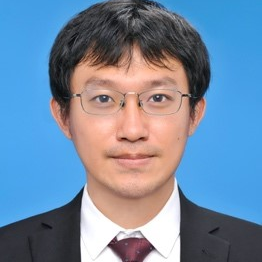Electrospinning for Nanofiber Membrane Fabrication: Challenges and Applications
A special issue of Nanomaterials (ISSN 2079-4991). This special issue belongs to the section "Synthesis, Interfaces and Nanostructures".
Deadline for manuscript submissions: closed (31 July 2023) | Viewed by 1483
Special Issue Editors
Interests: electrospinning; functional nanomaterials; 1-D nanomaterials; textile materials
Interests: flexible thermoelectric fabric; 2D thermoelectric materials; fiber sensing device; stretchable electronics; smart textiles; electrospinning
Special Issues, Collections and Topics in MDPI journals
Interests: smart textiles; nanomaterials; functional fibers
Special Issues, Collections and Topics in MDPI journals
Special Issue Information
Dear Colleagues,
Nanofiber membrane structures with nanoscale diameters, created through electrospinning, have many fascinating properties (e.g., excellent mechanical properties and large surface-to-volume ratios), making them ideal candidates for addressing many emerging environmental challenges, such as air and water pollution problems. Their larger surface areas also make them highly functionalized. Among the many techniques available for the production of nanofibers, electrospinning has rapidly emerged as a simple process that, through the careful control of operating conditions and polymer solution properties, can produce smooth nonwoven nanofibers with highly porous structures. Compared with the traditional phase inversion membrane preparation technology, electrospinning can form interconnected pores of uniform size and porosity of over 90%. Furthermore, the ability to combine an innovative and scalable electrospinning process with flexible surface treatments, such as chemical modification, plasma treatment, ultra-thin coatings, etc., makes them particularly suitable for the manufacture of water filtration membranes for various applications. It is clear that the selection of suitable materials and incorporation routes to introduce the desired functionality during or after electrospinning is critical to producing suitable nanofiber membrane systems for specific purposes.
This Special Issue focuses on recent theoretical developments and the practical applications of electrospun nanofiber membranes. It aims to attract researchers from academia and industry to advance the existing knowledge of nanofiber membrane electrospinning technology and to generate new ideas for future applications and new technologies. In this Special Issue, we invite contributions from major groups in the field with the aim of giving a balanced view of the current state of the art in this discipline. Potential topics include, but are not limited to:
- Study of the optimal design of the electrospinning process and properties of nanofiber membranes;
- Application of electrospinning nanofiber membrane, such as water treatment and air filtration;
- Structure design of electrospinning nanofiber membrane;
- Functional finishing and advanced application of electrospinning nanofiber membrane;
- Study on forming mechanism and theory of electrospinning nanofiber membrane;
- Study on electrospinning nanofiber membrane and fabric/non-woven composite technology and application.
Dr. Hongnan Zhang
Dr. Liming Wang
Dr. Dongxiao Ji
Guest Editors
Manuscript Submission Information
Manuscripts should be submitted online at www.mdpi.com by registering and logging in to this website. Once you are registered, click here to go to the submission form. Manuscripts can be submitted until the deadline. All submissions that pass pre-check are peer-reviewed. Accepted papers will be published continuously in the journal (as soon as accepted) and will be listed together on the special issue website. Research articles, review articles as well as short communications are invited. For planned papers, a title and short abstract (about 100 words) can be sent to the Editorial Office for announcement on this website.
Submitted manuscripts should not have been published previously, nor be under consideration for publication elsewhere (except conference proceedings papers). All manuscripts are thoroughly refereed through a single-blind peer-review process. A guide for authors and other relevant information for submission of manuscripts is available on the Instructions for Authors page. Nanomaterials is an international peer-reviewed open access semimonthly journal published by MDPI.
Please visit the Instructions for Authors page before submitting a manuscript. The Article Processing Charge (APC) for publication in this open access journal is 2900 CHF (Swiss Francs). Submitted papers should be well formatted and use good English. Authors may use MDPI's English editing service prior to publication or during author revisions.
Keywords
- electrospinning
- nanofiber membrane
- nanoscale diameters
- porous structures
- surface treatments
- water filtration








